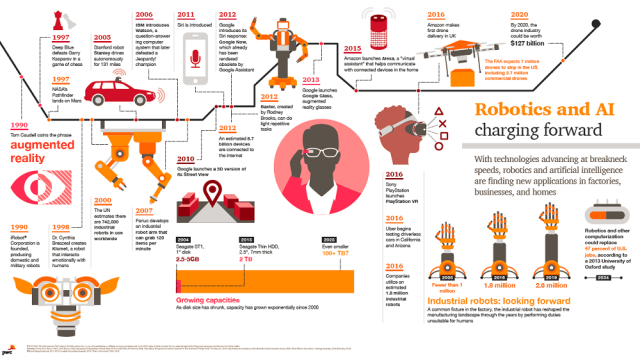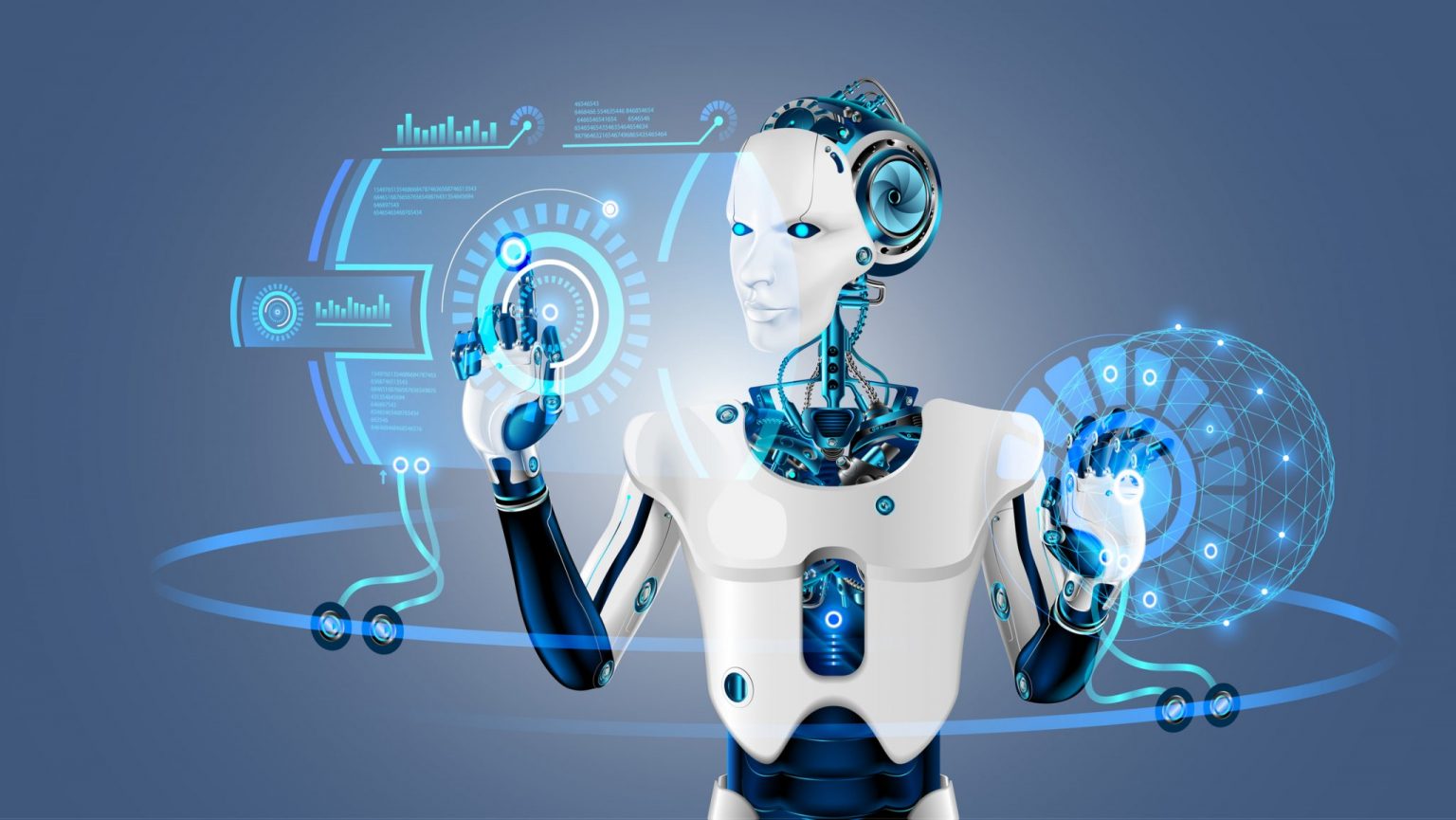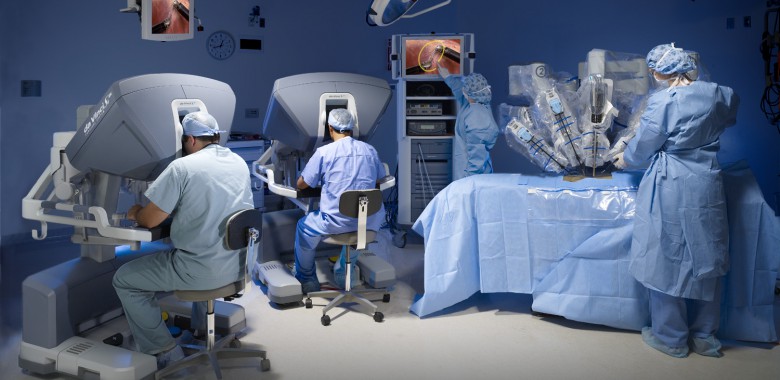We all are familiar with the visual aspects of a robot, isn’t it? But What Will Be The Future Robots, and what will be their role in our life? In our mind, the robot is a science fiction machine that resembles humans and is capable of replicating different human behavior and different functions. The robot runs on a programmable system that specifies the key operation of the robot.
A robot is a machine that does or performs some actions with the help of the instructions which is either automated with software or provided by the operator. Robots can perform different tasks or actions that a human can do with the output that is better than a human workforce. In simple terms, robots are machines that are capable of carrying out complex tasks automatically with the help of computer programs. They are either controlled with the help of an external device or with the code(program) embedded within. Robots are of different types some are humanoid where most are just machines that perform different tasks depending on how it has been programmed.
Robots can be completely autonomous or semi-autonomous. Robotics is now a familiar technology with varied applications and capabilities. The recent use of next-gen robotics has been increased vastly and is used in a wide range of applications. One can spot robots in various fields which includes co-bots (one which works with humans), educational robots, surgical robots, and so on. The use of robots can be seen across different places right from the home to the battlefield.
Know what robotics is?
Robotics is a stream of science that deals exclusively with robots and things related. The technology that deals with the production, design, process, and the use of the robots is robotics. Robotics make use of the computer program to control robots and to develop sensory feedback. With technology advancement, robotics is now a wide technology domain that inspires programmers to create unique robot machines to perform unique actions. Robots are used in different fields and are most widely researched throughout the world.

The growth of Robotics is rapid due to the advancement of technology and the innovations in it. Day by day the stream is developing with new researches on building new types of robots.
The evolution of robotics:
Early robotics began in the 17th century when a French inventor Jacques de Vaucanson created the first automated robot which can capable of playing 12 flute tunes. From the 17th century, we moved to the 18th century when Ads Lovelace invented mechanical programming and Charles Babbage invented the first generation computers. Since then, robotics has changed a lot! Different computer programmers have developed different programming languages to create unique functioning robots. Today, robots are so advance that they can talk like a human, act like a human, and work as a human. However, modern robotics is no more running on machine language. Artificial intelligence is taking over the modern robotics. Now, let’s find out more!
Future Robotics: Fueled by Big Data & powered by Artificial Intelligence
Recently, robotics has shifted towards Artificial Intelligence and Big Data from machine language. Big data is a massive real-time data collection that is critically important for AI implementation. Now, robots can learn from a large volume of real data sets which Big Data provides. It offers an exponential hike in computation power. Also, AI implementation becomes much easier with the availability of highly reliable low-cost and large-scale memory devices.
When Big Data fuels Artificial Intelligence, machine learning applications use large data sets to advance the functionality rapidly and independently. AI system then identifies system errors and improves pattern recognition capabilities. Also, it helps in descriptive analytics, diagnostic analytics, predictive analytics, and prescriptive analytics. As a result, modern robotics is constantly improving without even changing the base system!
Uses of Robotics:
- Performing dangerous and difficult tasks: With the help of robotics and its advanced technology robots are developed to perform tasks that are too dangerous and difficult for humans. Robots are also used in insecure ruins to find the survivors, discover mines and so on which is difficult and dangerous for a human and some which a human can’t perform like mars exploration and much more
- Medical advancements: The medical field has benefited more due to robotics. With the introduction of nanorobots the medical field has reached another milestone.
- Robots are cheaper and efficient than the human workforce.
- Robots can perform a task without getting bored, and also eliminates the hazards and mistakes.
Get Familiar with different types of future robots:

Collaborative Robots or Co-bots:
Collaborative Robots or Co-bots will interact with humans directly and work alongside humans to bring out the best outcomes. So, co-bots will come in two varieties, while one type of co-bots will be used mainly in industries the other type of co-bots will be service robots for professional and domestic use. These co-bots will mainly operate in public areas as helping hand of humans, isn’t it cool?
Rescue Robots:
Today we face different natural disasters like earthquakes, tsunami, cyclones, etc. The rescue robots will be designed and developed in such a way that they can help in different rescue operations when we will face any life-threatening situation. Tasks like moving chunks of large obstacles, tracing and detecting anyone in a forest, etc. can be performed by rescue robots. The rescue robots will operate in a team and conduct the complete rescue operation as planned.
Soft Robotics to develop Smart Skin:
Currently, AI is working on developing smart skin that can interact with biological tissues. Soft robotics will be able to create unique smart skin with the help of advanced AI. For example, smart skin can have the same color-changing ability as a cephalopod or it can regulate body temperature like the teleost fish. However, implementing smart second skin requires way more research and AI advancement, which today’s robotics experts are working on!
Medical Assistant / Hospital Robots:

The healthcare industry is going to utilize different hospital robots which will help people who need physical support and who are physically disabled. Here are different types of future hospital robots:
Surgical robots:
Surgical robots will dedicatedly help doctors and nurses in any kind of physics surgery. The surgical robots will have knowledge of different surgical procedures including bariatric, urological, and general. Thus, these robots will ease out complex surgical procedures in the future.
Exoskeletons:
Exoskeletons will use different sensors to help patients with physical disabilities in responding to different joint movements. Thus, Exoskeletons can make a child with Astasis or Neurological Disorder walk and even run!
Care robots:
The care robots will support and case the elderly people and physically disabled people to perform certain operations with ease. Care robots will fill up the shortage of caregivers and help elders live a happy and joyful life!
The potential of future robotics:
Modern robots are using multiple sensors like distance sensors, force sensors, proximity sensors, and cameras to respond in a real environment. Rather than focusing on a repetitive and dedicated task, modern robots can perform endless tasks in real-time. Using grippers, wheels, and Robo-arms, modern robot movements look as real as a human! The future generation robots are destined to make human life much easier and simpler. Future robots are going to interact with humans and work alongside them. As a result, we can see a drastic change in our normal work in the future.




